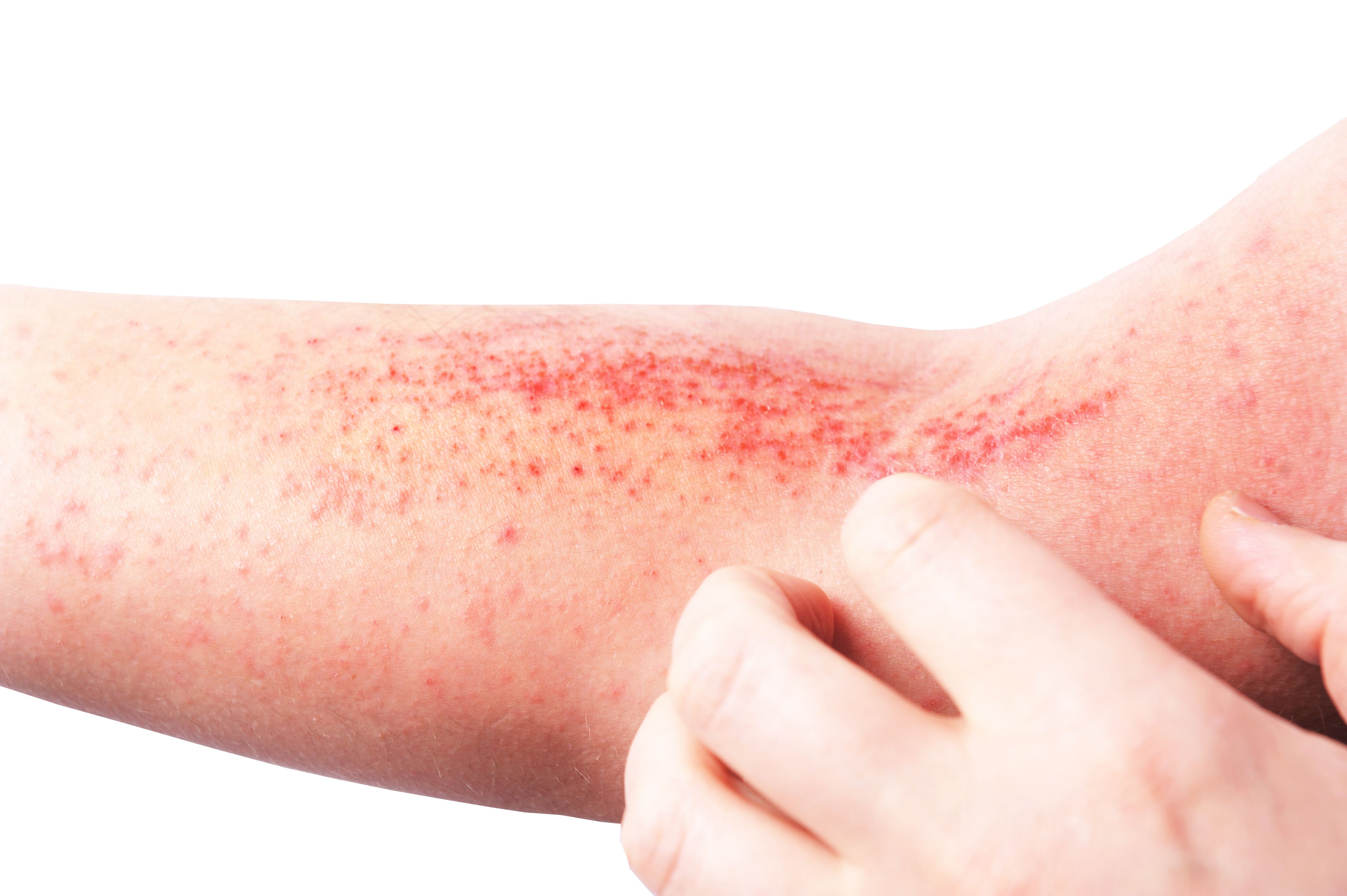- Center on Health Equity & Access
- Clinical
- Health Care Cost
- Health Care Delivery
- Insurance
- Policy
- Technology
- Value-Based Care
Study: Tralokinumab Shows More Frequent Injection Site Reactions Than Dupilumab in Patients With AD
Although injection site reactions were common occurrences in both the tralokinumab and dupilumab groups, tralokinumab caused ISRs more frequently.
Tralokinumab caused more frequent injection site reactions (ISRs) than dupilumab in patients with atopic dermatitis (AD), according to a study published in the Journal of Dermatological Treatment.
The researchers explained that progress in the understanding of the immunological mechanisms of AD has led to the recognition of multiple novel therapeutic targets. One of which is dupilumab, the first biologic drug approved for moderate-to-severe AD treatment for those aged 6 months and older; it binds the alpha subunit of the interleukin (IL)-4 receptor, blocking IL-4 and IL-13 signaling pathways. Tralokinumab, which blinds IL-13, is another approved drug.
Both treatments are administered by subcutaneous injection (SCI), which does not require the intervention of skilled personnel. Consequently, patients can self-administer SCIs at home or in outpatient environments, providing a reduction in medical facility fixed costs and flexibility in the anatomical infusion site. The researchers noted that ISRs are the most common cutaneous adverse events associated with the SCI of biological agents; ISR is defined as a collection of symptoms, including swelling, pruritus, erythema, and pain around the injection site. To compare the number of ISRs associated with dupilumab and tralokinumab, the researchers performed an observational real-life study, analyzing SCI-related symptom frequency, duration, and intensity.
In patients with atopic dermatitis (AD), injection site reactions (ISRs) occurred more frequently in those treated with tralokinumab. | Image Credit: lial88 - stock.adobe.com

To do so, they enrolled adult patients with moderate-to-severe AD in the Dermatology Unit of the University of Naples Federico II being treated with either dupilumab or tralokinumab between January 2022 to June 2023. The study population consisted of 392 patients with a mean (standard deviation [SD]) age of 50.2 (17.6) years; it was comprised of 214 (54.59%) males and 178 (45.41%) females. Of these patients, 327 (83.42%) received dupilumab and 65 (16.58%) received tralokinumab.
The researchers administered a 12-item questionnaire to eligible patients. The questionnaire was divided into 2 parts, the first consisting of 6 questions that examined patients’ age, sex, and clinical history. The second part included 6 items that evaluated whether the patient experienced pain, swelling, burning, or erythema after the injection, as well as the duration of their symptoms; the Numerical Rating Scale (NRS) (range, 0-10) was used to quantitatively evaluate pain/burning experienced.
Among those treated with dupilumab, 90 (27.52%) reported ISR. Of this subpopulation, 41 (45.5%) experienced swelling, 27 (30%) experienced pain, 18 (20%) experienced burning, and 4 (4.45%) experienced erythema; the mean (SD) NRS value for pain/burning was 4.9 (1.6). Additionally, the researchers found that ISR first appeared during the first or second month of treatment in 12 (13.34%) and 36 (40%) patients, respectively, while the remaining 42 (46.67%) patients showed ISR after the third month. They noted that the mean duration of ISR in this group varied between a few minutes to a maximum of 2 days.
Conversely, 39 (60%) patients treated with tralokinumab reported an ISR. Of these patients, 14 (35.89%) experienced pain, 10 (25.65%) experienced burning, 8 (20.51%) experienced swelling, and 7 (17.94%) experienced erythema; the mean (SD) pain/burning NRS value reported was 7.2 (2.3). The researchers reported that ISR onset occurred in 22 (33.84%) patients during the first month of tralokinumab therapy and in 38 (58.46%) patients during the second month. In terms of duration, ISR commonly occurred within a few minutes of tralokinumab injections and persisted for 3 to 5 days after.
Consequently, the researchers found a statistically significant difference between the prevalence of ISR in the dupilumab (P < .05) group compared to the tralokinumab (P < .05) group. Despite the number of patients who experienced ISR, none discontinued either therapy because of it. Also, 35 (38.89%) patients using dupilumab and 22 (56.41%) patients using tralokinumab managed ISR with short courses of topical corticosteroid therapy.
The researchers acknowledged their study’s limitations, one being that the study population consisted of patients treated at a single site in Italy; because of this, their findings may not be generalizable to the broader population. Another limitation was the sampling difference between patients treated with dupilumab compared with patients treated with tralokinumab. They explained that this difference is influenced by the more recent marketing of tralokinumab. Despite the study’s limitations, the researchers used their findings to make suggestions as to how to educate patients with AD on ISRs.
“Patient education and counseling prior to the initiation of the treatment is important to avoid unnecessary early discontinuation or scare adherence of the medication,” the authors concluded. “The physician should inform the patient on the possibility of developing ISR, especially during the first months of treatment and encourage them to continue the treatment.”
Reference
Martora F, Patruno C, D'Ascenzo S, Napolitano M. Injection site reactions after dupilumab or tralokinumab for atopic dermatitis. J Dermatolog Treat. 2024;35(1):2304027. doi:10.1080/09546634.2024.2304027
